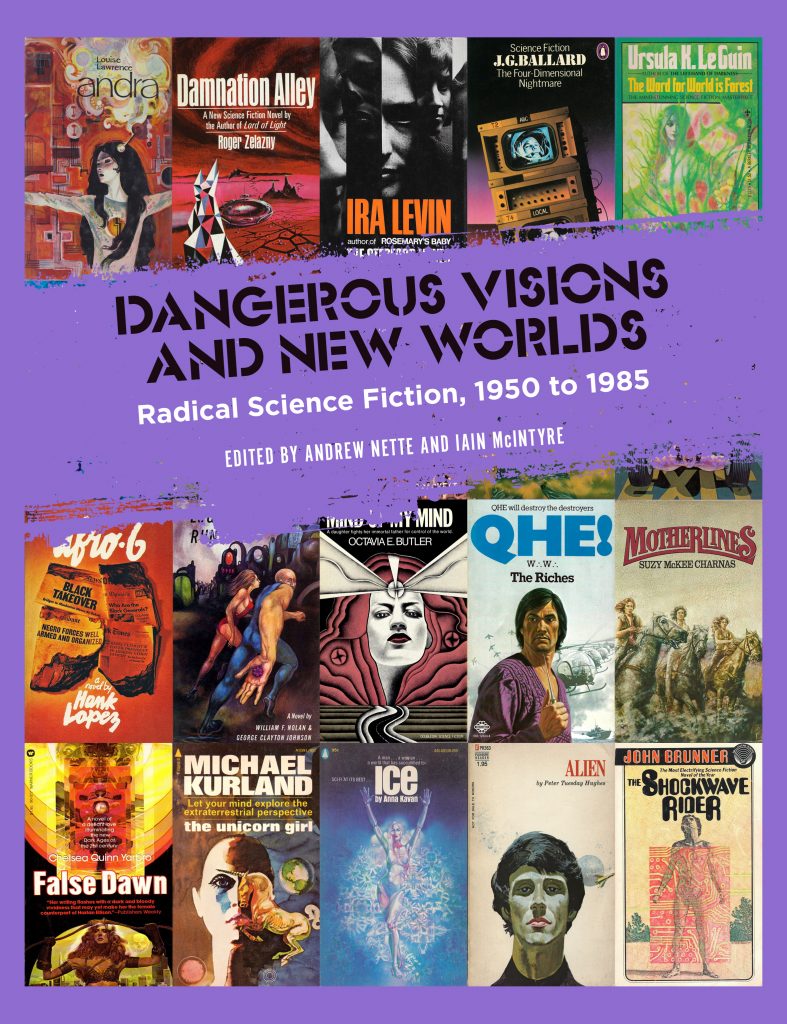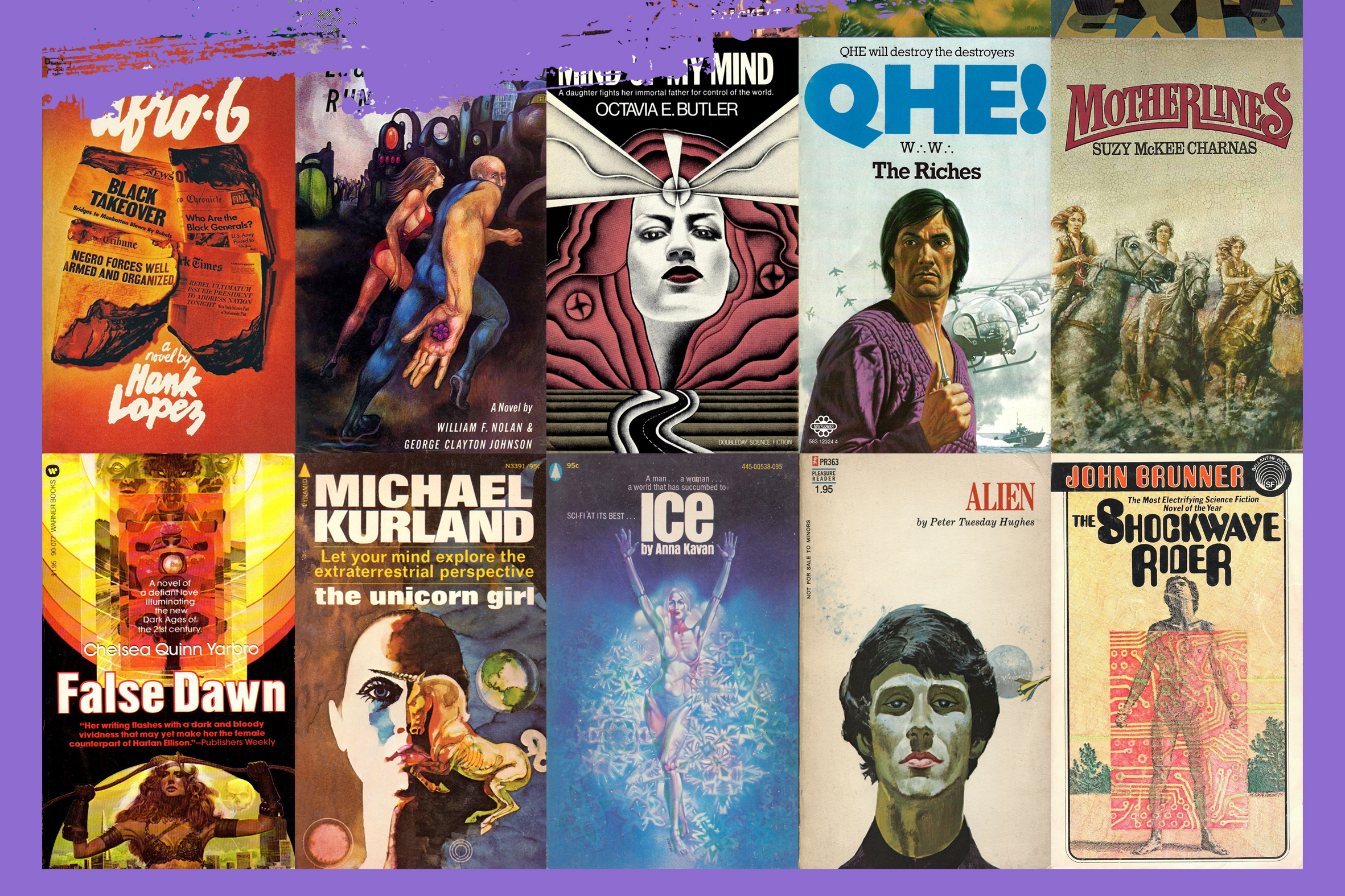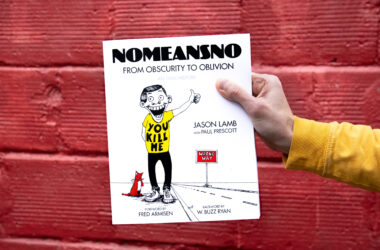By Michael Jongen
The Newton Review of Books
March 24th, 2022
Dangerous Visions and New Worlds explores how science fiction reflects the times in which it is written.
In this lavishly illustrated collection of essays, Nette and McIntyre take a third loving look at the era of pulp fiction, following on from their Girl Gangs, Biker Boys and Real Cool Cats (2017) and Sticking it to the Man (2019). This time they look exclusively at the science fiction genre and the New Wave era, and the result has a different feel from the previous two, perhaps a reflection of the authors having refined their themes of how the pulps reflected societal change.
In their introduction, they argue that the longevity of New Wave science fiction is because its ideas continue to be relevant:
While broader society has significantly changed and moral attitudes shifted, many of the social issues addressed by New Wave authors either remain or have been intensified, giving this body of work a continuing relevance.
In his essay ‘Eco-Death: Catastrophe and survival in the 1960s and 1970s’, Iain McIntyre charts the history of the environmental movement from the publication of Rachel Carson’s Silent Spring in 1962. While humans’ connection to the physical environment and the ravages of industrialism were recognised in much earlier fiction by writers such as HG Wells, eco-consciousness was developed by writers in the sixties and seventies. Writers such as Ursula Le Guin looked at issues of colonialism, militarism and environmental exploitation in off-worlds. Other writers, such as JG Ballard, looked at the possible outcomes of our environmental vandalism. Others still covered overpopulation and overconsumption, playing with terrifying scenarios.
The sexual revolution of the sixties and seventies also played a role in influencing the direction of science fiction. Rob Latham uses the term ‘sextrapolation’ to describe inventive new ways to express sexuality in the New Wave in reaction to the prudish or sexless novels of the Golden Age when ‘Those who refused to self-censor were subjected to the merciless pruning of editorial blue pencils.’
In ‘Speculative Fuckbooks’, Rebecca Baumann looks at the brief life of publisher Essex House, noting that ‘Erotic fiction and speculative fiction seem to be natural partners.’ She argues that since the publication of Frankenstein in 1818 it has been the business of speculative writing to mess with the bounds of the possible, including exploring sexual experience. While Latham has noted that SF is a genre with enormous appeal to male adolescents, Baumann notes that the genre was sexually repressed until the breakout in the sixties and seventies. Essex House published 42 titles in 1968 and 1969. These were written by well-established authors such as Harlan Ellison and Theodore Sturgeon, which gave them literary credibility. They were printed on high quality paper with artistic covers. Brain Kirby, the editor of the series, argued that:
‘… there’s no reason why good literature shouldn’t give you a hard-on’ – and no reason why a book that gives you a hard-on can’t be good literature. To encourage quality content, Kirby would not allow Essex House authors to hide behind pseudonyms.
Some described the Essex House novels as being anti-erotic, as they did not encourage sexual arousal so much as explore the nature of sexuality.
Andrew Nette writes about the glamorous, polymorphous, pansexual character Jerry Cornelius, created by Michael Moorcock, who travels through time and across dimensions. Nette notes that Cornelius’s character, despite ranging across different locations and times, remained anchored in the mores of the 1960s and the paraphernalia of the times.
‘Black Star’ by Michael A Gonzales is a fascinating look at the life and work of seminal AfroFuturist Octavia Butler and the experience of black writers in the overwhelmingly white world of SF:
This marginalization was even more pronounced in the world of genre writers, especially with science fiction, where editors were often more comfortable with characters that were Martians and slime space creatures than they were with other races.
Staffed and written by white men, diversity wasn’t an issue that concerned them. Hell, even most science fiction films didn’t have any black characters and basically erased the race from the future.
There is an interesting chapter by Molly Grattan on Young Adult fiction and the end of the world, starting with John Christopher but also exploring the work of Stephen King, who, she observes, is ‘always popular with teenage readers’. Grattan notes that in nearly all these stories the Earth has suffered a catastrophe that is the fault of the older generation. Despite reflecting the contemporary societies in which they were written, the novels show that the protests so common at the time have been ineffectual in dealing with the looming threats, and that progressive actions are inadequate responses to the realities of survival in a post-apocalyptic world. Nothing has changed in the last 50 years then!
There is much to enjoy in this collection of essays. David Curcion writes on the links between John Wyndham’s novels and Second-Wave feminism. Maitland McDonagh looks at the future according to gay adult science fiction novels from the 1970s. Iain McIntyre surveys the Doctor Who serials and novelisations from the same era. Erica L. Satifka explores the paranoid and prescient worlds predicted by Philip K. Dick.
McIntyre and Nette show how science fiction, beginning in speculation about the possibilities of the future, became a vehicle for questioning – and refusing to accept – established power. The New Wave rejected the conservatism of the Golden Age with its focus on scientific progressivism and its prim sexual morality. This includes the shift from SF to speculative fiction, which they argue was aesthetic as well as political.
The collection is lushly illustrated with gorgeous pulp covers to complement the finely written contributions. McIntyre and Nette are to be commended for their ability to show how popular culture can reflect the zeitgeist of its era and for demonstrating how relevant this particular genre is to our current circumstances, as climate change, pandemics and war continue to challenge us.
Andrew Nette and Iain McIntyre (eds) Dangerous Visions and New Worlds: Radical science fiction 1950 to 1985 PM Press 2021 PB 224pp $54.99
Michael Jongen is a librarian who tweets as @michael_jongen
You can buy Dangerous Visions and New Worlds from Abbey’s at a 10% discount by quoting the promotion code NEWTOWNREVIEW.







